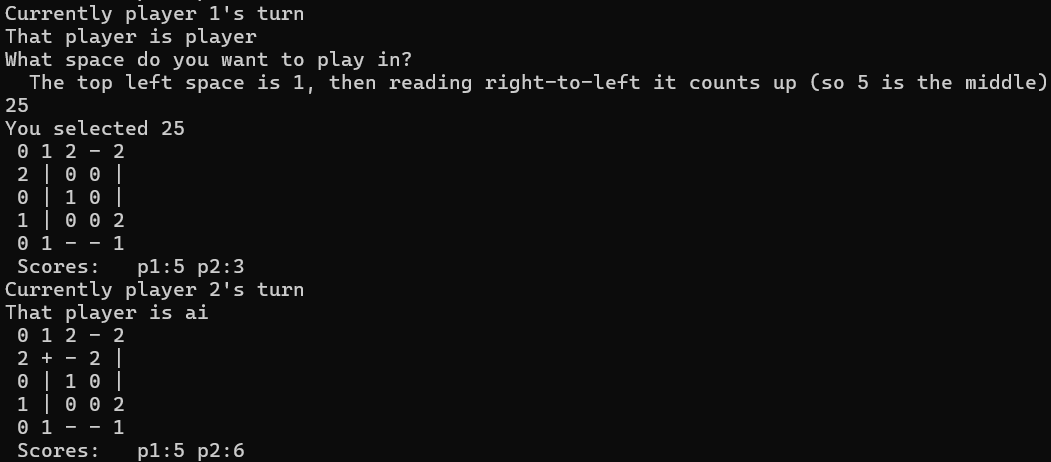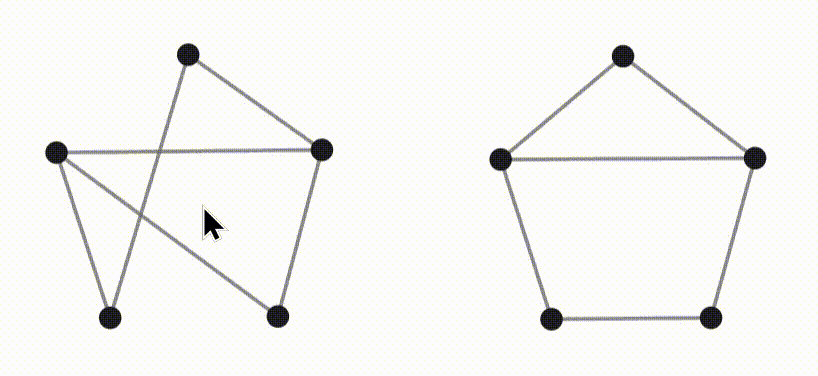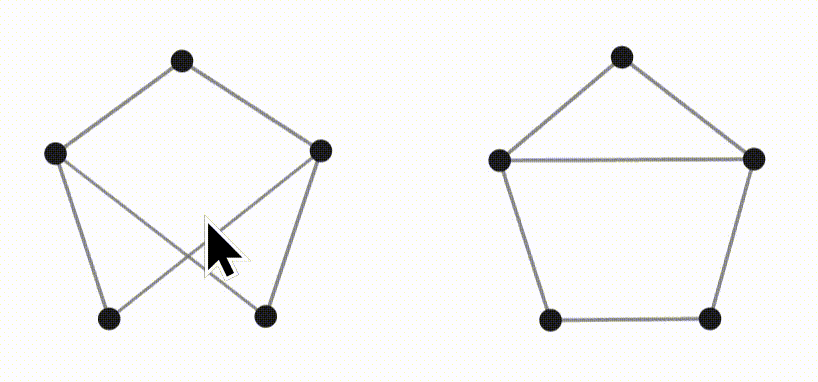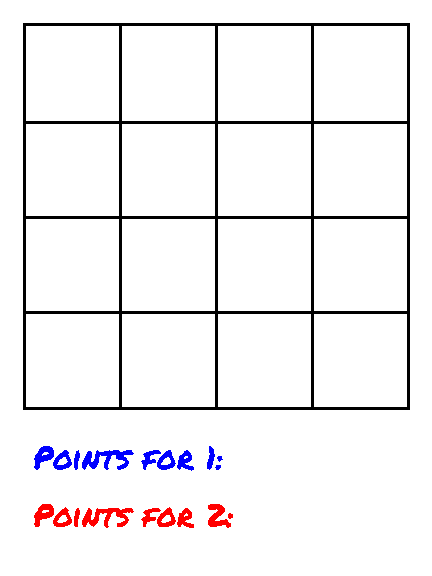Here's a link to my GitHub!
In one programming project I designed a 2-player game (similar to, but more complicated than tic-tac-toe), programmed it, then programmed an AI to play it. At reasonable settings, even I can’t beat the AI!
The AI uses alphabeta tree pruning to search all the relevant moves both players can take up to a certain amount of moves into the future. It compares the game positions at that depth and selects the move that it thinks is the strongest.

In another programming project I attempted to solve an unsolved problem in mathematics: finding a polynomial-time algorithm for determining if two graphs are isomorphic. I didn’t end up solving this difficult problem, but did cool things along the way.
First of all, let me explain what that problem is even asking. Mathematical "graphs" are how mathematicians represent networks, using dots (called vertices) and connections between the dots (called edges). Two graphs are isomorphic if (essentially) you can rearrange one to look exactly like the other.
In the top animation, the two graphs are isomorphic. You can see the mouse rearrange the left one to look like the right one.

In the bottom animation, the graphs are not isomorphic. No amount of rearranging will get the left graph to look like the right one.

Here are some key features of the project:
- A data type that represents undirected graphs.
- A function that generates all undirected graphs of a certain size.
- A function that brute-force checks whether two graphs are isomorphic.
- A function that checks if a graph is connected, then finds the size of each connected component.
- A system to represent each graph with a number code and to store those codes, eliminating the need to generate graphs more than once.
- Analyzing the efficiency of different isomorphic-testing strategies by timing how long each strategy takes and how often it makes the process quicker.
- Testing how often deleting specific types of edges from a graph makes those graphs more distinguishable, and using that result to implement a new type of check for non-isomorphism.

